Slow-paced Chengdu, fast-paced walking
"The ancients said," You can't enter Sichuan when you are young, and you can't leave Shu when you are old."It means that this land of abundance is actually a gentle land. There are many beautiful women in addition to delicious food, drinking, mountains and water. Young people should have the world in mind. If they enter Sichuan in their early years, those with weak will inevitably linger and never want to return. In this way, their life will be dull and it will be difficult to achieve great things.
First, the land of abundance is good, so whatever you plant will live, and the harvest will be good. Since ancient times, people have no worries about food and clothing, and they do not need to risk their lives for their livelihood.
Second, if there are many people in the Land of Abundance, labor will be cheap; if labor is cheap, labor costs will be low; if labor costs are low, things will be cheap; if things are cheap, people will have less pressure in life; if life pressure is low, people can spend a lot of time sipping tea and kneading hemp and enjoying a "leisurely" life.
I am here in Chengdu. I can't experience your leisurely life during my short stay. I can only quickly understand your ancestors. Arrive at Chengdu East Railway Station at about 4:00 in the afternoon, take the subway to Xinnanmen Long-distance Station, arrange accommodation nearby, and ask the accommodation owner how to get to Wuhou Temple and Jinli. The boss recommended going by bicycle, so I rode it for more than 20 minutes to Wuhou Temple. Wuhou Temple closed at 19:00. I rushed to buy a ticket to visit Wuhou Temple before
wuhou temple: The Wuhou Temple sacrifices Zhuge Liang, whom everyone in China knows and knows, and is named after he was granted the title of "Marquis of Wuxiang" during his lifetime. Wuhou Temple is the only temple in China where monarch and minister worship together, and it is also the most famous museum of cultural relics of the Three Kingdoms. The existing buildings were rebuilt during the Kangxi period of the Qing Dynasty in 1672.
The Wuhou Temple is not big. After entering the entrance, you pass through the long Mingpai, Tang Monument, Wenchen Corridor and Military Marshal Corridor. You first worship Liu Bei (Han Zhaolie Temple), then go down the steps (expressing that the courtiers should be one level lower than the monarch) and worship Zhuge Liang (Wuhou Temple). Then go to Sanyi Temple to review the story of Liu Guan and Zhang's bond in Taoyuan, and finally go through Kongming Garden to Huiling. In the evening, there were not many tourists, the atmosphere of the tour was weak, and there were no tour groups to use as guides, so we hurried around.







jinli: Jinli next to Wuhou Temple is the folk area of Wuhou Temple. The sky was getting dark, and the red lanterns in Jinli were already lit. They were only waiting for the sky to dissipate and illuminate the First Street of Western Shu with bright lights. The legendary Jinli is the oldest commercial street in the history of Western Shu and has been famous nationwide as early as the Qin, Han and Three Kingdoms periods. Different from the ancient cultural streets in many other cities:
In Jinli, you can chew crispy melon seeds, drink strong foreign wine, and talk soft Chengdu dialect in a bar where countless talent singers were born, but listen to the most fashionable and stylish international style music at present;
In Jinli, what you can see is the crowded food stalls, you can smell various scents of fried, stewed, evaporated, or cold mixed in your nose. In your mouth, you can keep the spicy, sesame, sweet, sour, crispy, waxy, hot, or ice flavors sent in from your own and others 'bowls with one hand, while the other hand is holding your mobile phone and constantly patting yourself and others' delicious food: Three cannons, beef charred cake, yellow glutinous rice, sugar and oil fruit, sweet water surface, beef bean pudding, fat sausage flour, soup sesame cake, Sanhe Ni, Tianzhutang chicken slices, Zhangfei beef, Bo Bo chicken, etc.
In Jinli, you can see the most dynamic shadow puppet performances, the turntable sugar paintings with the most childhood memories, the wooden ox flowing horses and crossbows with the most flavor of the Three Kingdoms, the most royal style of Shu brocade weaving, etc.






I don't comment much on Jinli. It seems that there are very few locals, almost tourists from other places. When I was in Jinli, I only ate a bowl of local jelly. When I came out of Jinli, I had dinner at a snack bar outside, and rode a bicycle to Jiuyan Bridge on the street of bars








The next day's activities are Qingcheng Mountain, Dujiangyan, and come back at night to visit Kuanzhai Alley. Qingcheng Mountain and Dujiangyan are the two most popular attractions around Chengdu, and they are usually visited together and you can make a day trip. In the morning, you can take the high-speed train in Xipu. It takes 28 minutes to reach Qingcheng Mountain.
Qingcheng mountainIt is divided into two major scenic spots: Qianshan and Houshan. The Qingcheng Front Mountain is mainly a concentration of Taoist culture, cultural relics and historic sites; the Qingcheng Back Mountain is mainly the quiet natural scenery of beautiful water and forests, and is a good place for hiking and leisure. My trip was mainly on the front mountain of Qingcheng Mountain. The main attraction of Qingcheng Mountain was Taoist culture and its historical monuments. The Tao Gong Temple in the whole mountain has Tianshi Cave as the core, including Jianfu Palace, Shangqing Palace, Zuzu Hall, Yuanming Palace, Laojun Pavilion, Yuqing Palace, Chaoyang Cave, etc. History has changed for thousands of years, but dozens of Taoist temples and temples are still well preserved here. Tickets: 78 yuan (online shopping) I climbed Qingcheng Mountain on foot and took the cable car down the mountain. This not only visited must-visit attractions, but also saved time and did not delay my visit to Dujiangyan.







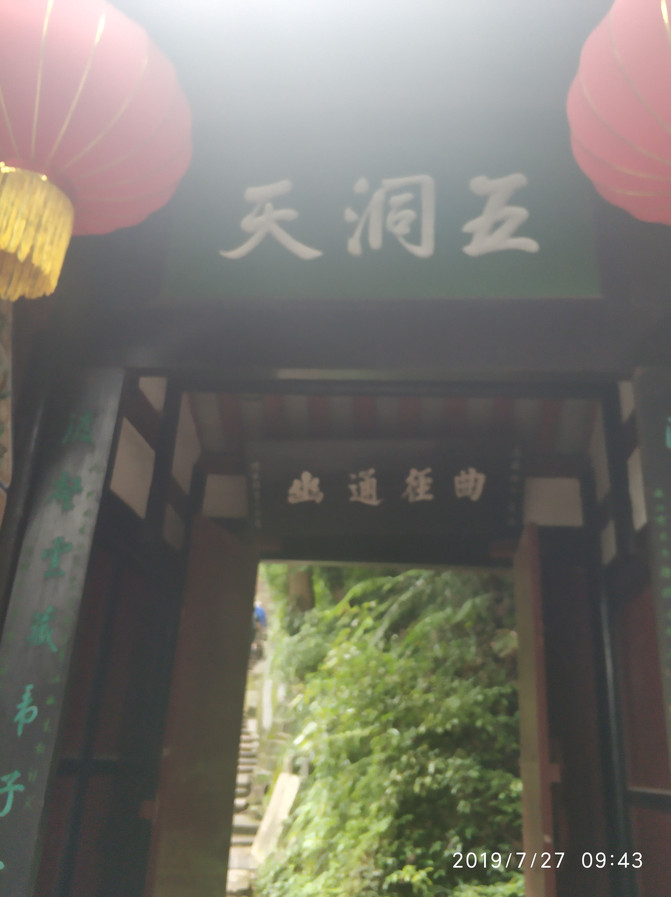






After exiting Qingcheng Mountain, take Route 101 to Dujiangyan Scenic Area in about 50 minutes
Dujiangyan: Dujiangyan, the Dujiangyan Water Conservancy Project was built by Li Bing, the prefect of Shu Prefecture of Qin, during the Warring States Period. It has a history of more than 2200 years. Dujiangyan is the only fully preserved "ecological water conservancy project" in my country and even in the world that has been around for thousands of years and is still in use. Because of its construction, Chengdu has the reputation of "the land of abundance". The Dujiangyan Water Conservancy Project is located on the Minjiang River in the western part of the Chengdu Plain. It consists of three major parts: the Baopingkou Water Inlet, the Yuzui Water Diversion Embankment, and the Feisha Weir Spillway. The ancients used their wisdom to design the treasure bottle mouth, water diversion fish mouth and flying sand embankment, which scientifically automatically diverted and discharged the Minjiang River water, controlled the inflow flow, and eliminated flood hazards, making the Western Sichuan Plain a land of abundance that "people follow floods and droughts, but do not know about famine". In memory of Li Bing and his son, people also built a temple for worship, called the Erwang Temple. Dujiangyan contains many small attractions. There are mainly Fulongguan, Erwang Temple, Anlan Suoqiao, Yuleiguan, Lidui Park, Cuiyue Lake, etc.
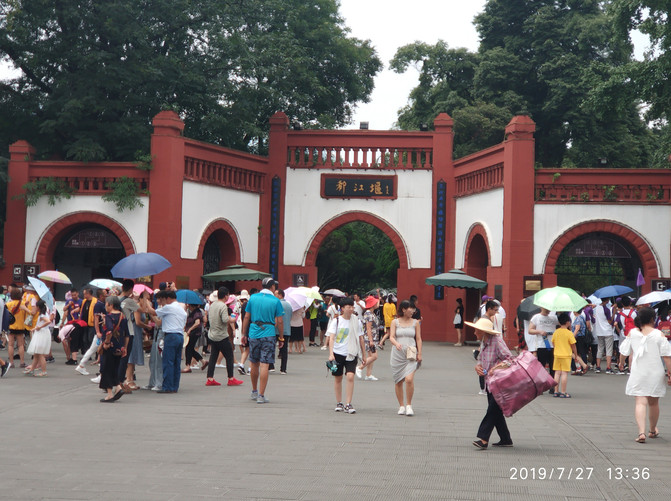






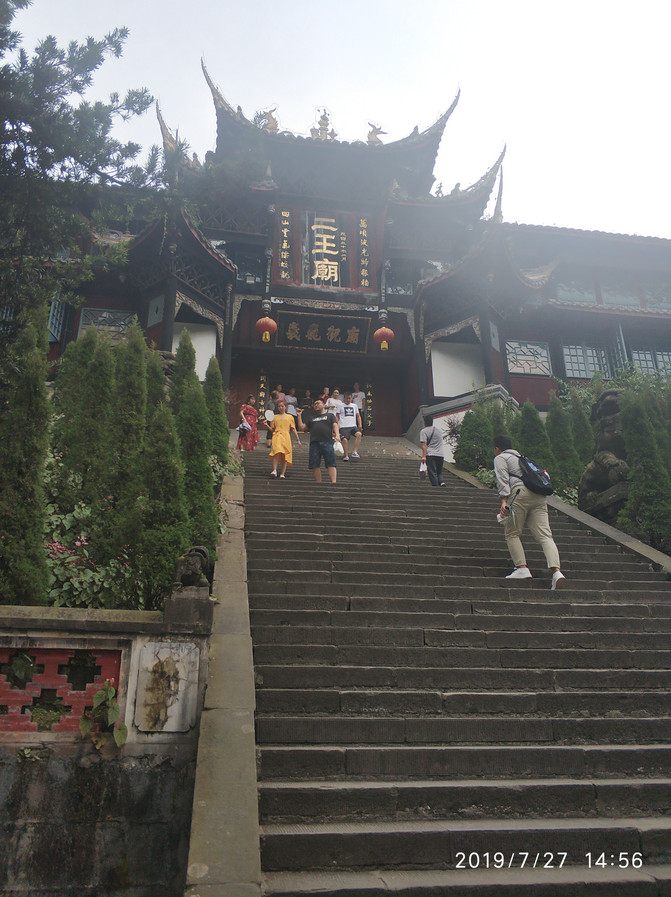

Take bus No. 4 from Dujiangyan in 40 minutes to Dujiangyan High-speed Railway Station, take the high-speed railway to Xipu Station, and then take the subway to Kuanzhai Alley.
kuanzhai alley: Wide and narrow alleys are the best embodiment of Chengdu's leisure city and market life. From the Eight Banners 'children carrying cages, raising birds, planting flowers and cultivating grass during the Mancheng period in the Qing Dynasty; to the high-ranking officials and dignitaries drinking and banquets for guests and friends during the Republic of China, to the modern literati and tourists enjoying life with a cup of green tea and a bamboo chair, the wide and narrow alleys have become a typical reflection of Chengdu life.
Kuanzhai Alley is located in the central area of the city and plays an important role in the overall strategic layout of Chengdu City's historical and cultural city display system and historical and cultural heritage protection system. It consists of wide alleys, narrow alleys, and well alleys arranged in parallel, and is all made of indigo bricks and tiles. This is also a relatively large-scale ancient street of the Qing Dynasty left over from Chengdu. In the fifty-seventh year of Kangxi (1718), after putting down the Jungar Rebellion, more than a thousand soldiers were selected to garrison Chengdu and build Shaocheng. Today's wide and narrow alleys are the legacy of Shaocheng. Kuanzhai Alley has more than 70 courtyards and more than 300 rooms. The wide and narrow alleys are slowly integrated into the western Sichuan folk houses from the barracks dormitories. The harsh western Sichuan style courtyard shape inside the residential houses is also basically preserved. Building components such as window sashes and bird hanging poles reproduce the charm of old Chengdu in detail.
The street spatial dimension of the wide and narrow alleys is defined by the buildings and courtyard walls on both sides. The width of the street is about 7 meters wide and the narrow alleys is about 5 meters. The buildings along the street are 1 - 2 floors and are also 5 - 8 meters high. The resulting street section has a height-to-width ratio of about 1:1.
Theme; Wide Alley: A nostalgic area with an old face; Narrow Alley: An extension of petty bourgeoisie's favorite mood; Jingley Alley: A reappearance of old Chengdu in a market. Specific explanation: "Leisure in the wide alleys, products in the narrow alleys, and scouring in the wells and alleys." The wide alley contains the most complete old buildings in the entire block, and most of the old doors are well preserved. Here you can taste a bowl of tea, eat authentic Sichuan cuisine, and experience the customs and customs of old Chengdu. Narrow Alley has both buildings from the late Qing Dynasty and the early Republic of China, as well as early Western-style buildings. It is the place that best embodies the aesthetics of wide and narrow; it is a leisure and lifestyle area in Chengdu that focuses on Western-style food culture, art and leisure, and healthy life. Jingxiang is a typical epitome of Chengdu's folk customs. In addition to the fascinating brick cultural walls, it also gathers Chengdu's specialty snacks and folk customs, showing the unique flavor of authentic old Chengdu life. Each alley has its own characteristics, and each alley can feel the most Chengdu.
Kuanzhai Alley is the most prosperous and lively street in Chengdu since ancient times. The pure pedestrian path is the best place for tourists to avoid the traffic. The three parallel simple streets are paved with blue bricks. The buildings along the street are lined up with each other with their own characteristics. Now most of them are open tea houses or restaurants. Chinese and Western restaurants are available on this ancient street and every family is crowded. There are also small vendors selling local snacks such as leaf harrows, glutinous rice cakes, turtle jelly and other local snacks. Pedestrians on the streets are cheering and laughing, echoing the bustling city scene thousands of years ago. History and modernity meet here, and the diverse forms of folk life are also reproduced here.







The day's journey ends in a hurry, and we will go to Du Fu Cottage one morning, then take a bus to Leshan Giant Buddha Scenic Area, and then take a bus from Leshan Giant Buddha Scenic Area to Emei Mountain Scenic Area for accommodation.
Du Fu Cottage: The former residence of Du Fu, the great realist poet of the Tang Dynasty, when he lived in Chengdu. In the winter of 759 AD, Du Fu brought his family to Sichuan to avoid the "Anshi Rebellion" and built a thatched hut in Chengdu, called the "Chengdu Cottage." He has lived here for nearly four years. He was also known as the Ministry of Industry because he was awarded the title of "Member of the Ministry of Industry of the Inspection School". In 765, Yan Wu died of illness. Du Fu, who lost his only support, had to bid farewell to Chengdu with his family. Two years later, he fled to Jing, Hunan and other places through the Three Gorges.
Du Fu has lived here for nearly four years and has written more than 240 poems that have been passed down to this day. Among them,"Wen Guan Jun Collects Henan and Hebei" has now become a compulsory course for students in many areas. The former residence of the Caotang is regarded as a "holy place" in the history of Chinese literature.
After Du Fu left Chengdu, the Cottage no longer existed. Wei Zhuang, a poet during the Shu Dynasty before the Five Dynasties, found the ruins of the Cottage and rebuilt the thatched Cottage, making it possible
Preserved. Du Fu Cottage was restored many times in the Song, Yuan, Ming and Qing Dynasties, the two largest of which were rebuilt in 1500 AD
In 1989 (the 13th year of Hongzhi of the Ming Dynasty) and 1811 AD (the 16th year of Jiaqing of the Qing Dynasty), the scale and layout of Du Fu's Cottage were basically established.
It has evolved into a museum that integrates the pattern of commemorative ancestral halls and the style of the poet's old residence. The building is simple and elegant, and the gardens are quiet and beautiful.
famous cultural holy land.
When Du Fu came to Chengdu that year, he felt that the scenery in Chengdu was pleasant, so he settled here and built Du Fu Cottage himself. Due to poverty at that time, he also wrote many poems to ask local celebrities for some flowers, plants and trees to cultivate them himself. He took a fancy to a precious land next to Huanhua River, so he built Du Fu Cottage along the river.










From Du Fu Cottage to the Sichuan Province Museum on the west side of Huanhuaxi Park, we can collect tickets for free with our ID card. It displays the development history of many ancient Shu land civilizations. However, our trip was in a hurry and we couldn't visit them in detail. Just make more stops in Zhang Daqian's exhibition room.


Take a bus to the Leshan Giant Buddha Scenic Area at noon.
Leshan Giant Buddha: Also known as Lingyun Giant Buddha, it guards the confluence of the Minjiang River, Qingyi River and Dadu River. It is one of the artistic masterpieces of Moyan statues in the Tang Dynasty. It is the world's largest stone carving statue of Maitreya Buddha. The scenic area consists of Lingyun Mountain, Wuyou Mountain, giant reclining Buddha landscape, etc. There are still many tourists in the scenic area. There are two ways to visit the Leshan Giant Buddha, one is on foot. Walking is to get down from the right shoulder of the Buddha and then up from the left foot, which has an immersive beauty. There is a temple on the top of the mountain, which is Lingyun Temple. The main hall in the temple is majestic and tall, with bells and drums hanging high on both sides. It is solemn and majestic, which makes the hearts of people in it feel infinite piety. When you come out of the temple and go down the mountain, you have to slowly walk down the right shoulder of the Buddha statue. When you walk on it, you can't see how big the Buddha statue is. Only when you get down the mountain and stand at the feet of the Buddha can you truly feel it. It is said that several people can stand on one toenail of the Buddha, which is enough to show the majesty of the Buddha. It is also by standing at the Buddha's feet that we can deeply understand the feeling of Sun Wukong who couldn't get out of the palm of Buddha. The Buddha is huge but not obtrusive, majestic but not overbearing, and its kind eyes make people feel cordial and easy-going, but it also has an aura that is not angry but powerful. Although he sat upright, he suppressed the unruly river demon. If you want to get down to the foot of the Buddha, you need to queue up and get down the plank road. The queue is nearly 2 hours. If you want to take a panoramic view of the Buddha, you can view the Buddha from the river by boat.






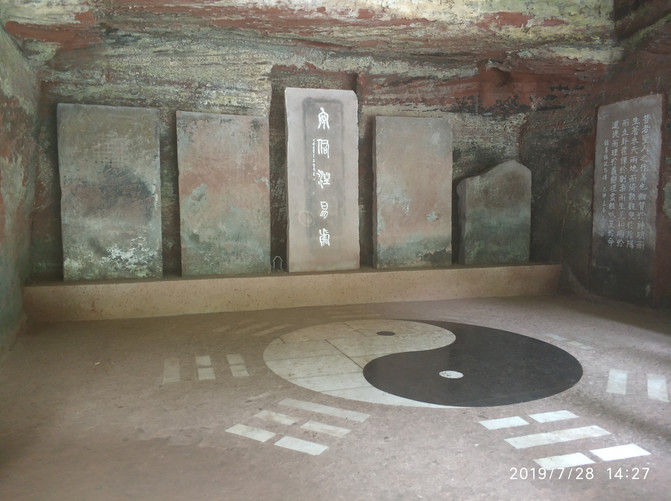





From the Leshan Giant Buddha Scenic Area, take a bus for about 40-50 minutes to the Emei Mountain Baoguo Temple Tourist Transportation Center, settle down and take a stroll at the foot of Emei Mountain while it is still light.
Mount Emei is the ashram of Samantabhadra Bodhisattva. Religious culture, especially Buddhist culture, constitutes the main body of Mount Emei's history and culture. All buildings, statues, ritual instruments, etiquette, music, paintings, etc. all show the strong atmosphere of religious culture. It is one of China's "Four Famous Buddhist Mountains". It has steep terrain and beautiful scenery. It is known as "Emei World Show."
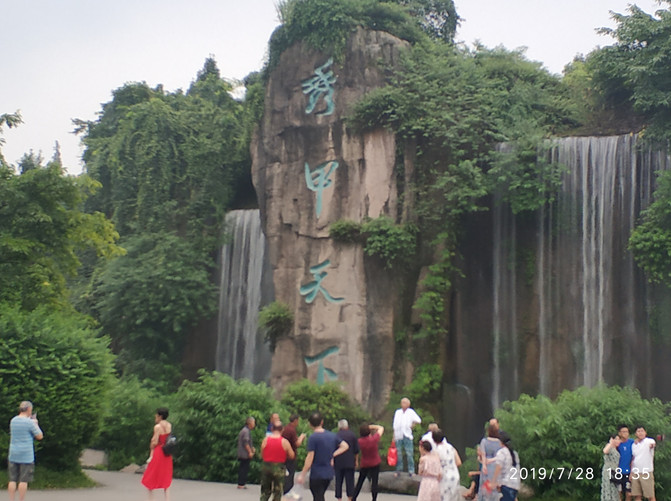




Having dinner at the food street, it rained heavily, so I quickly returned to the hotel to rest and prepare to climb Emei the next day.
The next day, it was still raining, which disrupted our plans for Emei. The original plan was to take a bus to Wuxiangang to start climbing, and stay near the Elephant Cleansing Pool. The next day, we were climbing the Jinding Summit. When it rained, the plan was changed and I bought a ticket directly to Leidongping and then climb the Jinding Summit. Due to the heavy rain, the cable car for climbing the Jinding was stopped, and a large number of tourists were stranded at the cable car station. I decided to walk up and down for nearly 4 hours.



Climbing Emei in the Rain
Emei Jinding has a beautiful scenery
The cable car was stopped on rainy days
Climb the Xiujinding on foot
No matter how old you are, you have to go crazy.
After coming down from Jinding, take a bus in Leidongping to Wuxiangang to another scenic spot, Qingyin Pavilion.






Take a bus back to the Baoguo Temple Tourist Passenger Transportation Center at Wuxiangang, quickly return to the hotel to pick up your luggage, and take the last bus back to Chengdu at the passenger transportation center. Prepare to take a train from Chengdu to Chongqing. Now, I can tell others that I have been to Chengdu. Although my stay is short, at least I have.
Previous Article:Meeting the beauty of Ya 'an: Go to Tianfu Lung Panda Hometown to experience the late autumn
Next Article:Walking through the streets in Chengdu in 2020
